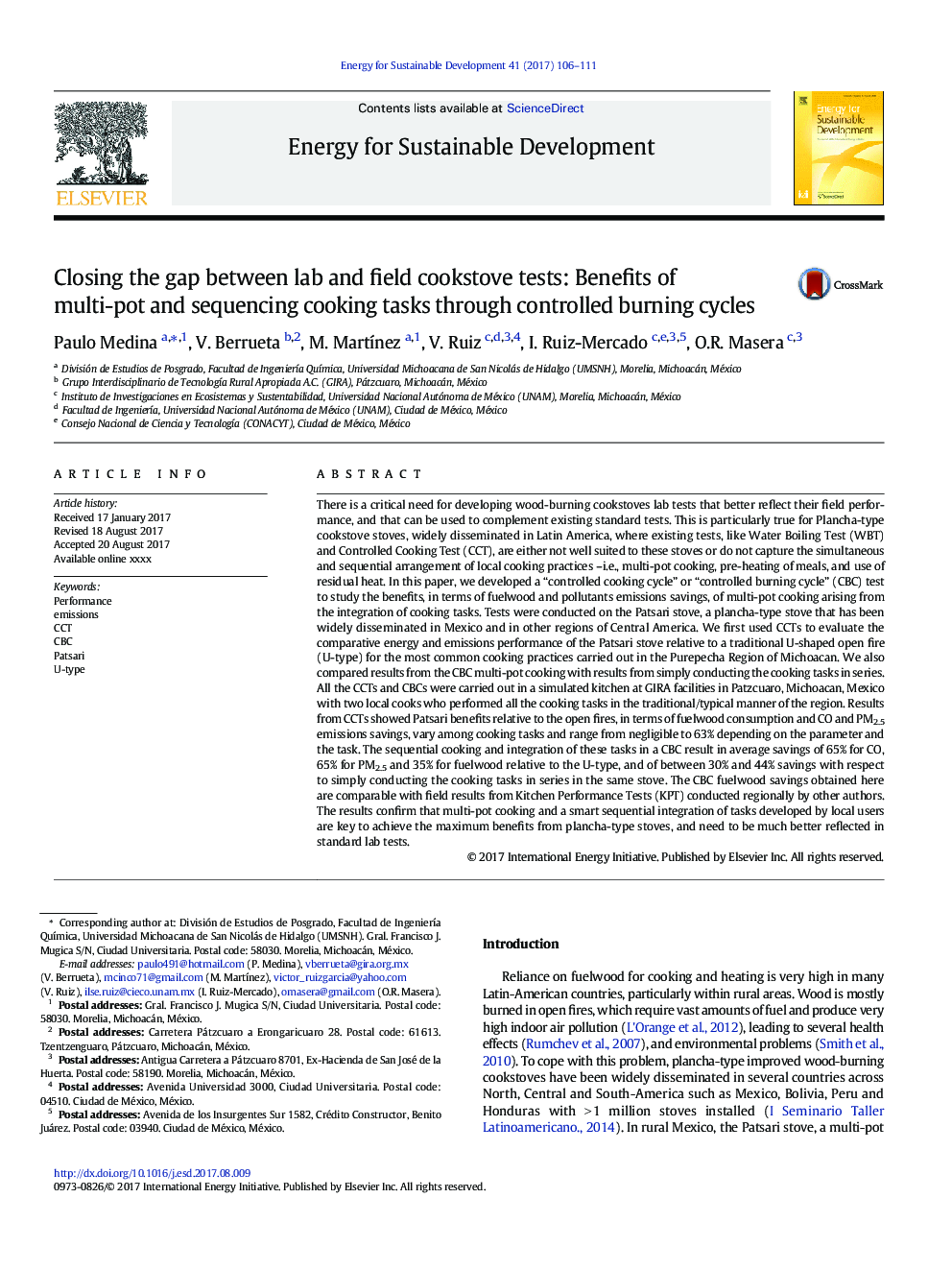| کد مقاله | کد نشریه | سال انتشار | مقاله انگلیسی | نسخه تمام متن |
|---|---|---|---|---|
| 5114303 | 1484389 | 2017 | 6 صفحه PDF | دانلود رایگان |
عنوان انگلیسی مقاله ISI
Closing the gap between lab and field cookstove tests: Benefits of multi-pot and sequencing cooking tasks through controlled burning cycles
ترجمه فارسی عنوان
تعطیل کردن فاصله بین آزمون آزمایشگاه و آزمایشگاه آشپزخانه: مزایای چندگانه و وظایف پخت و پزینگ از طریق چرخه کنترل سوزاندن
دانلود مقاله + سفارش ترجمه
دانلود مقاله ISI انگلیسی
رایگان برای ایرانیان
کلمات کلیدی
موضوعات مرتبط
مهندسی و علوم پایه
مهندسی انرژی
انرژی (عمومی)
چکیده انگلیسی
There is a critical need for developing wood-burning cookstoves lab tests that better reflect their field performance, and that can be used to complement existing standard tests. This is particularly true for Plancha-type cookstove stoves, widely disseminated in Latin America, where existing tests, like Water Boiling Test (WBT) and Controlled Cooking Test (CCT), are either not well suited to these stoves or do not capture the simultaneous and sequential arrangement of local cooking practices -i.e., multi-pot cooking, pre-heating of meals, and use of residual heat. In this paper, we developed a “controlled cooking cycle” or “controlled burning cycle” (CBC) test to study the benefits, in terms of fuelwood and pollutants emissions savings, of multi-pot cooking arising from the integration of cooking tasks. Tests were conducted on the Patsari stove, a plancha-type stove that has been widely disseminated in Mexico and in other regions of Central America. We first used CCTs to evaluate the comparative energy and emissions performance of the Patsari stove relative to a traditional U-shaped open fire (U-type) for the most common cooking practices carried out in the Purepecha Region of Michoacan. We also compared results from the CBC multi-pot cooking with results from simply conducting the cooking tasks in series. All the CCTs and CBCs were carried out in a simulated kitchen at GIRA facilities in Patzcuaro, Michoacan, Mexico with two local cooks who performed all the cooking tasks in the traditional/typical manner of the region. Results from CCTs showed Patsari benefits relative to the open fires, in terms of fuelwood consumption and CO and PM2.5 emissions savings, vary among cooking tasks and range from negligible to 63% depending on the parameter and the task. The sequential cooking and integration of these tasks in a CBC result in average savings of 65% for CO, 65% for PM2.5 and 35% for fuelwood relative to the U-type, and of between 30% and 44% savings with respect to simply conducting the cooking tasks in series in the same stove. The CBC fuelwood savings obtained here are comparable with field results from Kitchen Performance Tests (KPT) conducted regionally by other authors. The results confirm that multi-pot cooking and a smart sequential integration of tasks developed by local users are key to achieve the maximum benefits from plancha-type stoves, and need to be much better reflected in standard lab tests.
ناشر
Database: Elsevier - ScienceDirect (ساینس دایرکت)
Journal: Energy for Sustainable Development - Volume 41, December 2017, Pages 106-111
Journal: Energy for Sustainable Development - Volume 41, December 2017, Pages 106-111
نویسندگان
Paulo Medina, V. Berrueta, M. MartÃnez, V. Ruiz, I. Ruiz-Mercado, O.R. Masera,
